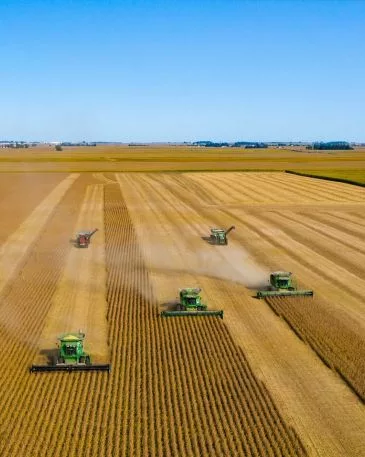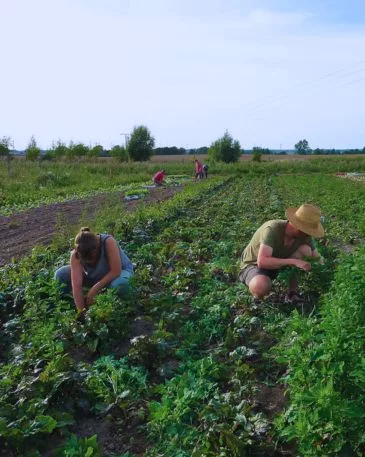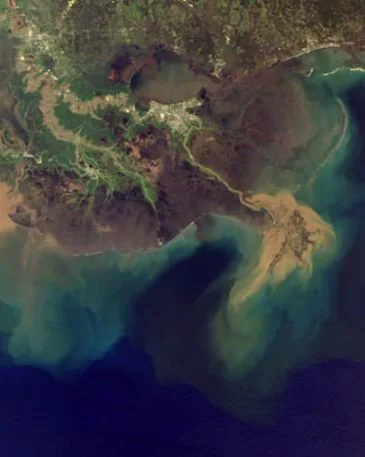Organic food supports a safe and just Earth
The takeaway
- In the UK and Europe, the standards required for producing certified organic food are strict and include a focus on creating a farming system that’s better for the environment. The standards aren’t as strict in the US so you will see different opinions on organic coming from across the pond – it’s a different beast there.
- If you can, you should buy organic to combat climate change and improve our Earth’s environment. It’s not the only way we can improve food sustainability but it improves biodiversity, reduces the pesticide pollution that kills off river and marine life, naturally captures carbon in the soil and increases animal welfare.
- Not all organic food is better for the environment. Organic meat still produces higher emissions than conventional plant-based food. Though, grazing animals are a key part of organic and regenerative farming systems so meat doesn’t have to be removed entirely from our diets.
- Look for seasonal British food as much as possible. The emissions from importing organic food grown abroad can exceed the emissions saved during farming.
Repairing and protecting the earth for future generations goes beyond reducing carbon emissions. There are eight key things we need to keep in balance (or bring back into balance) to ensure that we don’t deteriorate the planet in irretrievable ways1.
There’s a brilliant documentary on Netflix with David Attenborough if you want to know more about why each of these areas are important. Buying organic food supports farmers who are working towards staying within the limits of what is safe and fair.
Organic farms have lower carbon emissions
Farmers who’ve turned to organic aim to work in harmony with nature. This means that crops aren’t grown in huge machinery-friendly fields with the same crop as far as the eye can see year after year. And livestock aren’t kept in high intensity pens and barns, secluded from the natural landscape. Both of these conventional approaches to growing our groceries produce higher levels of carbon emissions.


Planting the same crop each year drains the soil of the nutrients that crop uses to grow, and creates a particular kind of very limited ecosystem in the soil – one that exists around that single crop. Organic food is instead grown in rotation – different crops on the same land at different times. Some plant species replenish (‘fix’) nutrients back into the soil and they can be used by the next crop. In the UK these could be lentils, soybeans, pinto beans or grazing crops like clover2. Soils are also enriched by nourishing with the nutrients and bacteria from compost.
These healthy, living croplands store (‘sequester’) 3.5 tonnes more carbon per hectare and are more effective at keeping that carbon stored for the long term3.
Non-intensive livestock farming, where cattle and sheep are instead primarily grazers, also helps the land lock away carbon through the organic matter left in the soil, offsetting the methane emissions we all know come from ruminants like cows. On average, an organic farm will produce 1 tonne per hectare less than a non-organic farm, each year4.
Conventional farming’s fertiliser use is killing our oceans
Plants need nutrients to grow. They take them from the soil to build them into their stalks, leaves, roots and fruit. When the crop is harvested, those nutrients come into our food chain and sustain us. They don’t stay on the farm, so over time, conventionally farmed soil becomes nutrient-poor. Fertiliser has been the answer to this. It was revolutionary in improving agricultural yields and feeding a growing world population.
Fertilisers, though, come with a cost attached that we now understand. Both animal manure and commercial fertilisers contain the nutrients nitrogen and phosphorus. To keep the crops growing as fast and as big as we want them to, they’re sprayed onto fields in huge quantities. There is so much left in the soil that isn’t absorbed by plants that it’s washed away by rainwater into streams, rivers and eventually the oceans.

In rivers and oceans, these fertilising nutrients continue having their effect – helping plant life grow. The problem is, what grows is algae and phytoplankton that smother the water surface, preventing the life-giving sunlight and oxygen from reaching the rest of the marine ecosystem below. Without those, the life below dies off.
Organic farms promote rural biodiversity
Organic farming aims to minimise disruption to the natural environment, producing food in a way that works with nature, not against it. – Soil Association5
By bringing more plant diversity onto the farm, maintaining (or restoring) hedgerows, ponds and woodland, organically grown food is supporting the restoration of habitats for species that have traditionally thrived in Britain’s agricultural landscape, including bees and hedgesparrows.
While this is an improvement from the monoculture (single-crop) desert that can exist on a conventional farm, it’s still not a truly natural ecosystem. This is at the heart of the land sharing vs. land sparing debate. Is it enough to support the wildlife that is well-suited to a gently agricultural organic landscape? Or should we be freeing up land and giving it back to nature so those species that need an untouched habitat can thrive?
It’s not a simple question and there’s little consensus on the best solution for the whole agricultural system, with a number of vested interests in the mix. If the whole country turned to organic farming, we would likely increase biodiversity in the UK, but some scientists believe that we’d also probably be producing less food overall, since organic farms are not as intensive, and so we’d have to import more food grown on land taken from nature overseas6.
Still, that doesn’t have to be the outcome – detailed models of the European food production show that a series of broader agricultural and cultural changes that encompass organic principles would help countries become more self-sufficient and reduce the total amount of overseas land used, freeing it up again for nature7.
What we can say now, is that with organic farmland making up only a small 3% of the UK total8, it’s not a bad thing to expand this and increase the biodiversity on what land we currently use as long as we are also exploring other industrial options like vertical farming that could grow more using less space and diet changes that could make us less reliant on high land usage.
Organic farms can be more reliable food producers
‘Once in a lifetime’ weather events are becoming more and more common as our climate loses some of its previous stability. Reliable sources of food will become increasingly important as these extremes of weather kill off crops and damage harvests.
Organic farms, with less reliance on a single crop and healthier soil are better placed to ride out difficult times. In them, they produce 30% higher yields than conventional farms9.
What can you do now?
Do you want to support the organic movement but worry about being able to afford organic groceries? Read this post on sustainable ways you might be able to make room for organic produce in your weekly budget.
You’ve no doubt heard a lot about how healthy organic food is. How fewer pesticides and chemicals will make you feel better and help you avoid disease. This isn’t the whole story. Find out the truth behind the myths of organic health claims.
Hero image credit: Photo by Glenn Carstens-Peters on Unsplash
Sources:
- Rockström, J., Gupta, J., Qin, D. et al., “Safe and just Earth system boundaries.” Nature 619, 102–111 (2023). https://doi.org/10.1038/s41586-023-06083-8. Accessed 28 July 2023.↩
- The Organic Research Centre. Soil and nutrient management on organic farms. The Organic Research Centre, 2006, https://www.organicresearchcentre.com/manage/authincludes/article_uploads/iota/technical-leaflets/soil-and-nutrient-management-on-organic-farms.pdf. Accessed 29 July 2023.↩
- Soil Association. “Why Organic?” Soil Association, https://www.soilassociation.org/take-action/organic-living/why-organic/. Accessed 28 July 2023.↩
- OF&G Organic. “Organic: the benchmark for truly regenerative farming.” OF&G, 3 October 2022, https://ofgorganic.org/news/organic-the-benchmark-for-truly-regenerative-farming. Accessed 28 July 2023.↩
- Soil Association. “Organic Farming is Better for Wildlife.” Soil Association, https://www.soilassociation.org/take-action/organic-living/why-organic/better-for-wildlife/. Accessed 28 July 2023.↩
- Laurence G. Smith, Guy J. D. Kirk, Philip J. Jones & Adrian G. Williams. “The greenhouse gas impacts of converting food production in England and Wales to organic methods.” Nature Communications, vol. 10, no. 4641, 2019. Nature, https://www.nature.com/articles/s41467-019-12622-7. Accessed 29 July 2019.↩
- Poux, X., and P. Aubert. “An agroecological Europe in 2050: multifunctional agriculture for healthy eating.” IDDRI, 18 September 2018, https://www.iddri.org/sites/default/files/PDF/Publications/Catalogue%20Iddri/Etude/201809-ST0918EN-tyfa.pdf. Accessed 28 July 2023.↩
- UK Government/DEFRA. “Chapter 12: Organic farming.” GOV.UK, 21 October 2022, https://www.gov.uk/government/statistics/agriculture-in-the-united-kingdom-2021/chapter-12-organic-farming. Accessed 29 July 2023.↩
- Rodale Institute. “Farming Systems Trial.” Rodale Institute, https://rodaleinstitute.org/science/farming-systems-trial/. Accessed 28 July 2023.↩

